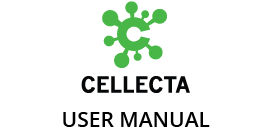Pooling of Amplified indexed libraries
For the DriverMap scAIR TCR-Mark36 or scAIR BCR-Mark30 Assays, which generates a low complexity pool of amplified products for TCR/BCR and T/B cell marker genes for 96 single cells (per plate) sequencing depth is not a critical issue for most Illumina’s NGS kits. Generally, we recommend using low-output 600-cycle Paired-End NGS reagent kits and aim for 5-10 million reads per one sample or 100 million reads for eight pooled Amplified Indexed Library samples. Under these NGS sequencing depth conditions, you could generate at least 20 reads per number of molecules (for TCR or BCR chains) which is an optimal condition for downstream analysis of NGS data. Please, refer to the table below for guidelines on how many samples may be combined for different instruments.
| Instrument | Reads per flow cell | Number of pooled Amplified Library samples (each sample is triplicate) per flow cell |
|---|---|---|
| MiSeq | 15 million (V2 Reagent Kit) | 1 to 2 |
| MiSeq | 25 million (V3 Reagent Kit) | 2 to 3 |
| NextSeq 2000 | 100 million (P1 flow cell) | 8 |
Sequencing on NextSeq 1000/2000. The instructions below are provided for sequencing of pooled Amplified Indexed Libraries using the NextSeq 1000/2000 XLEAP-SBS P1 reagent kit (600 cycles) (Cat.# 20100981) and NextSeq 1000/2000 XLEAP-SBS Read Primer Kit (Cat.# 20112859).
Sequencing of Pooled Amplified Indexed Libraries on NextSeq 1000/2000
The instructions below are provided for sequencing of pooled Amplified Indexed Libraries using the NextSeq 1000/2000 XLEAP-SBS P1 reagent kit (600 cycles) Cat.# 20100981 and NextSeq 1000/2000 XLEAP-SBS Read Primer Kit (Cat.# 20112859).
Follow the standard Illumina protocol for the XLEAP-SBS kit on how to prepare XLEAP-SBS consumables, dilute libraries, and set up a sequencing run:
https://support-docs.illumina.com/IN/NextSeq10002000/Content/IN/NextSeq2000_1000/Protocol_seq_xleap.htm
Modifications of the standard Illumina protocol, specific for the use of sc-AIR assay custom sequencing primers are the following:
- Preparation of diluted pooled Amplified Indexed Library. Dilute purified pooled Amplified Indexed Library (from Section 7.2) to 1,000 pM loading concentration by mixing 21.6 μl of RSB buffer with 2.4 μl of purified pooled Indexed Library (10 nM). Add 2 μl of PhiX Control (1 nM concentration) to the diluted indexed library.
- Preparation of diluted Custom AIR Sequencing Primers. Custom AIR sequencing primers provided in the kit need to be diluted using HT1 buffer (from NextSeq 1000/2000 XLEAP-SBS Read Primer Kit),
- Prepare Custom DNA Read primer mix: combine 1.8 μl of Forward SeqDNA primer (100 μM) and 1.8 μl of Reverse SeqDNA primer (100 μM) with 600 μl of HT1 buffer.
- Prepare Custom Index primer mix: Combine 3.6 μl of Forward SeqIND primer (100 μM) and 3.6 μl of Reverse SeqIND primer (100 μM) with 600 μl of HT1 buffer.
- Prepare Custom DNA Read primer mix: combine 1.8 μl of Forward SeqDNA primer (100 μM) and 1.8 μl of Reverse SeqDNA primer (100 μM) with 600 μl of HT1 buffer.

- Before loading the diluted Amplified Indexed Library and Custom Read and Custom Index primer mixes, make sure that the reagent cartridge is thawed and inspected before proceeding. Invert the cartridge several times to ensure complete reagent mixing. You will not be able to do this once the indexed library and primers are loaded.
- Transfer 600 μl of the custom read primer into the “Custom 1” well and 600 μl of the custom index primer into the “Custom 2” well.
- Load 26 μl of diluted Amplified Indexed Library in the Library port well.
- Log in to BaseSpace to run monitoring and select manual setup mode. When in manual setup mode, enter the read lengths, then specify the custom primer wells from the drop-down under each read to the correct well.
Program Cycles Custom 1: 309 Custom 2: 10 Custom 2: 10 Custom 1: 309
- This protocol will direct the instrument to perform NGS using the custom primers, not the default stock material inside the cartridge. Once that is complete, you can follow the standard protocol to start the run: https://support-docs.illumina.com/IN/NextSeq10002000/Content/IN/NextSeq2000_1000/Protocol_seq_xleap.htm
Need more help with this?
Contact Us

